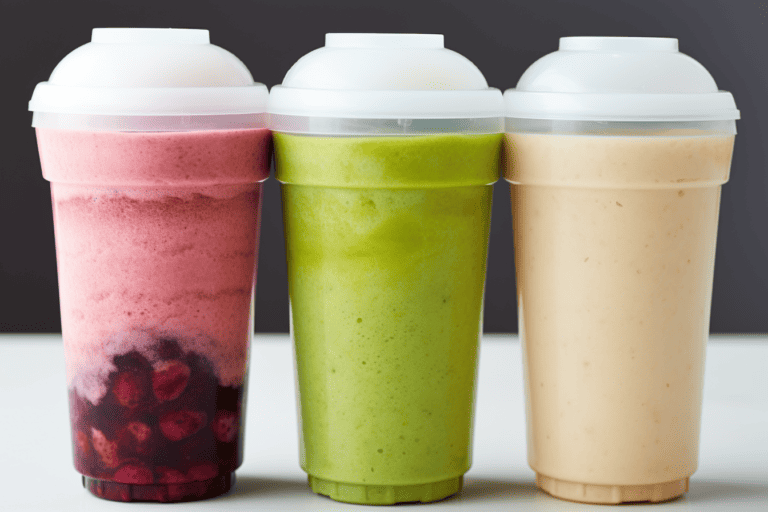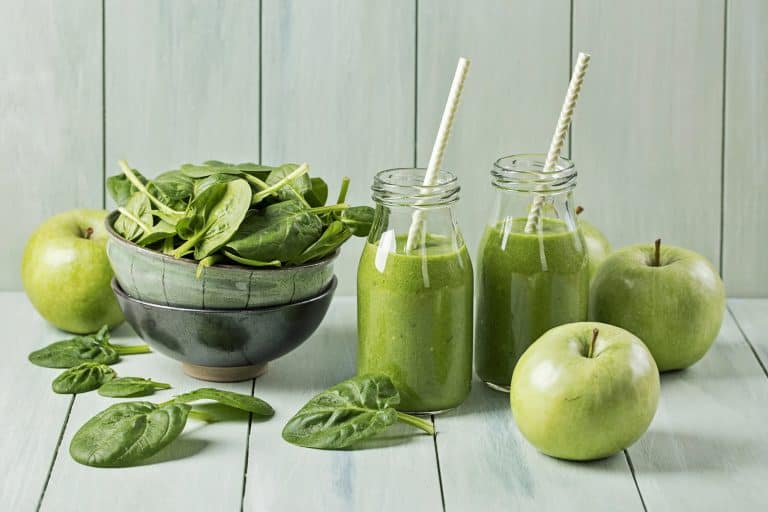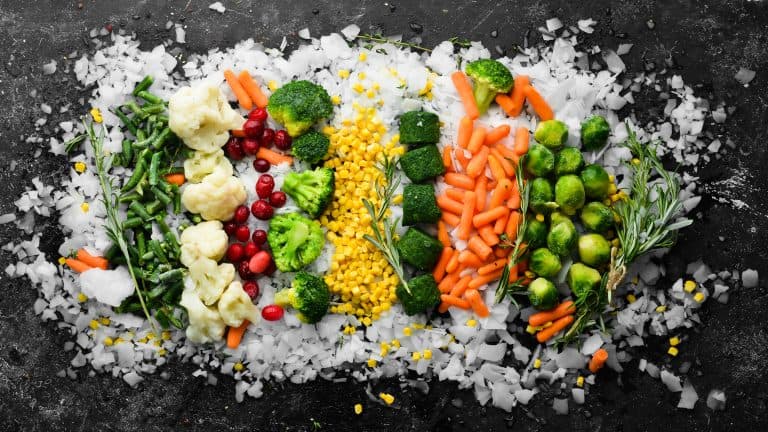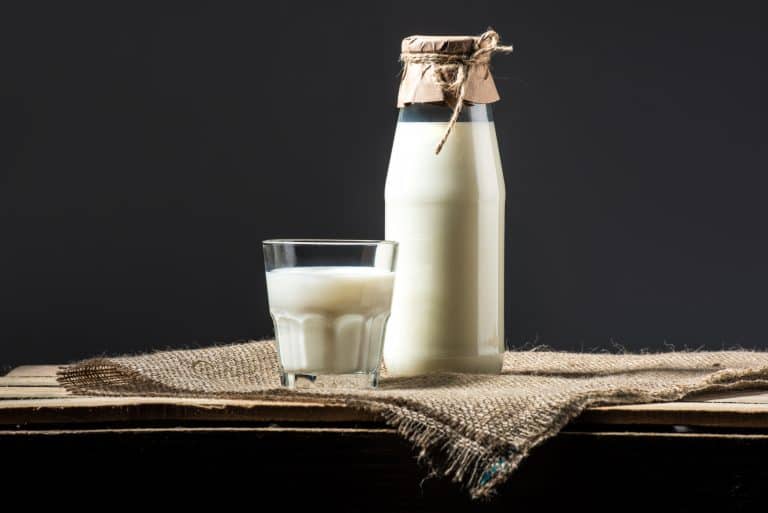How to Freeze Fruit for Smoothies (Easy Guide)
Disclosure: This post may contain affiliate links, meaning I get a commission if you decide to make a purchase through my links, at no cost to you.
Welcome to another exciting post on our smoothie journey! Today, we’re diving into the essential technique of how to freeze fruit for smoothies.

As a smoothie enthusiast and a mom who loves to whip up nutritious and delicious smoothies for my boys, I’ve learned that one of the secrets to a perfect smoothie is using frozen fruit.
Not only does it give your smoothie a thick, creamy texture, but it also allows you to make the most of seasonal fruits all year round.
So, let’s get started and learn how to freeze fruit for smoothies, ensuring we always have the freshest, most flavorful ingredients at our fingertips.
The Importance of Freezing Fruit for Smoothies
Freezing fruit for smoothies is not just a matter of convenience, it’s a game-changer for the quality of your smoothies. Let’s delve into why this is so crucial.
Enhancing the Natural Sweetness
When you freeze fruit at its peak ripeness, you’re essentially locking in its natural sweetness. This is particularly beneficial for fruits like bananas, berries, and stone fruit. The result? A smoothie that’s naturally sweet, reducing the need for additional sweeteners like sugar or honey.
Improving Texture
Frozen fruit contributes to a thicker, creamier texture in your smoothies. Think about the difference between a smoothie made with fresh fruit and one made with frozen fruit. The latter has a consistency that’s more like a milkshake or ice cream, which can make your smoothie feel more like a treat.
Prolonging Shelf Life
We’ve all been there – you buy fresh fruit with the intention of making smoothies, only to find it overripe or spoiled before you get the chance to use it. Freezing fruit is a great way to prolong its shelf life. It also allows you to take advantage of seasonal fruits and enjoy them in your smoothies all year round.
Convenience
Having a stash of frozen fruit in your freezer means you’re always ready to whip up a smoothie. It’s a great time-saver, especially on busy mornings. You can just grab your frozen fruit, add some almond milk or yogurt, a spoonful of nut butter or chia seeds, and you’ve got a nutritious smoothie ready in minutes.

General Steps to Freeze Fruit for Smoothies
Freezing fruit for smoothies is a simple process that requires minimal prep work. Here are the general steps you need to follow to ensure your fruit is frozen properly and ready for your next smoothie creation.
Washing the Fruit
Before you freeze your fruit, it’s important to wash it thoroughly. This helps to remove any dirt, bacteria, or harmful pesticides from the fruit’s skin. For fruits like strawberries and peaches, a simple rinse under cool running water should suffice.
Drying the Fruit
After washing, it’s crucial to dry your fruit well. This step helps to prevent unwanted freezer burn and icicles from forming on your frozen fruit. You can gently pat the fruit with a paper towel or clean washcloth to remove all moisture.
Prepping the Fruit
Once your fruit is clean and dry, it’s time to prep it for freezing. This usually involves cutting the fruit into smaller pieces. For example, bananas can be sliced, and stone fruits like peaches and apricots should be pitted and chopped. This not only makes it easier to blend the fruit into a smoothie later but also helps with portion control.
Freezing the Fruit
Now comes the fun part – freezing the fruit! To do this, spread the prepped fruit in a single layer on a baking sheet lined with parchment paper. Make sure the pieces of fruit aren’t touching each other. Then, place the baking sheet in the freezer for a few hours or overnight. This method of freezing prevents the fruit pieces from sticking together, making it easier to grab just the amount you need for your smoothie.
Storing the Frozen Fruit
Once the fruit is frozen, transfer it to freezer-safe bags. Try to remove as much air as possible from the bags before sealing them to prevent freezer burn. Don’t forget to label the bags with the date so you can keep track of how long the fruit has been in the freezer. Most fruits can last up to six months in the freezer, but they’re usually so delicious in smoothies that they get used up long before then!
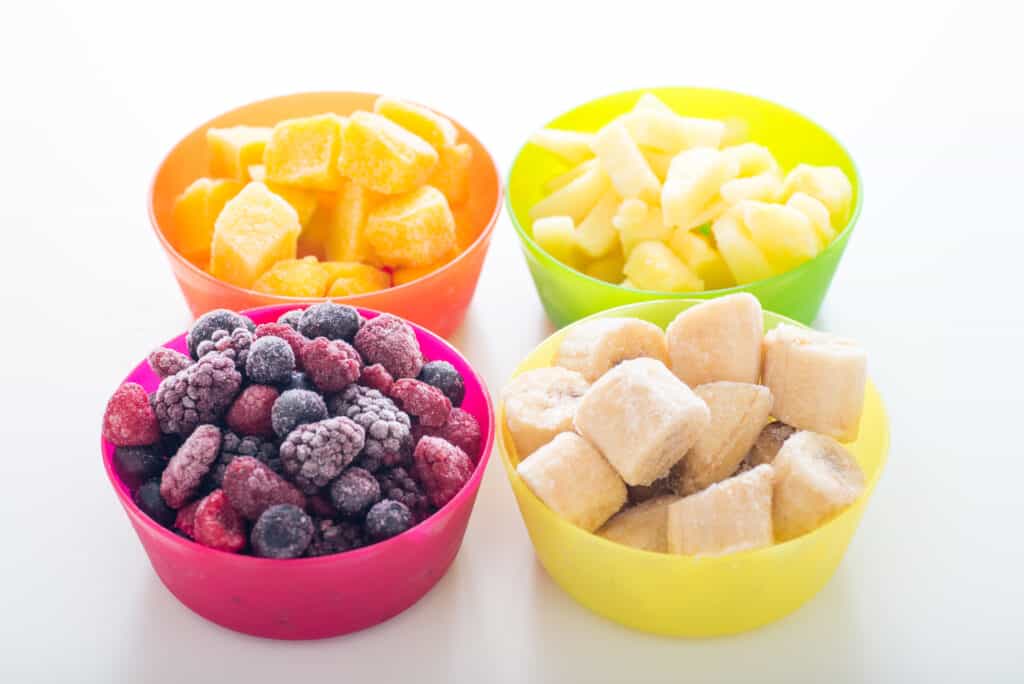
Specific Instructions for Freezing Different Types of Fruits
Freezing fruit for smoothies is not a one-size-fits-all process. Different fruits require different preparation and freezing methods. Let’s take a closer look at how to freeze various types of fruits for your smoothies.
How to Freeze Bananas
Bananas are a staple in many smoothie recipes. To freeze bananas, simply peel them, chop them into slices, and spread them on a baking tray covered with parchment paper. Once they’re frozen, transfer them to a freezer bag. This method prevents the bananas from turning brown and allows you to easily pull out a few slices at a time for your smoothies.
How to Freeze Kiwi and Mango
Kiwi and mango can be frozen in a similar manner. Cut off the tops and bottoms of the kiwi, peel off the skin, and chop them into quarters or slices. For mango, peel and remove the pit, then cut into chunks. Spread the fruit on a baking tray covered with parchment paper, freeze, and then transfer to freezer bags.
How to Freeze Berries
Berries like blueberries, blackberries, raspberries, and strawberries can be frozen directly without any additional preparation. Simply spread them out on a baking sheet and freeze before transferring to freezer bags. This method allows you to enjoy the freshness of berries in your smoothies all year round.
How to Freeze Citrus Fruits
Citrus fruits like lemons and oranges can be frozen whole. Simply place the whole fruit in a freezer-safe container and freeze. When you’re ready to use them, they can be easily zested or juiced. Alternatively, you can slice oranges into rounds and freeze them in a freezer bag for later use.
How to Freeze Citrus Juice
If you have leftover citrus juice, you can freeze it into ice cube trays and store the cubes in a freezer bag. These citrus juice cubes can be a great addition to your smoothies, adding a refreshing tang and extra vitamin C.
Freezing Other Smoothie Ingredients
In addition to fruit, other smoothie ingredients like fresh ginger and spinach can also be frozen. For ginger, simply freeze the whole root in a freezer bag. When you’re ready to use it, it grates easily even when frozen. For spinach, wash and dry the leaves, blanch them in boiling water, then freeze in freezer bags.
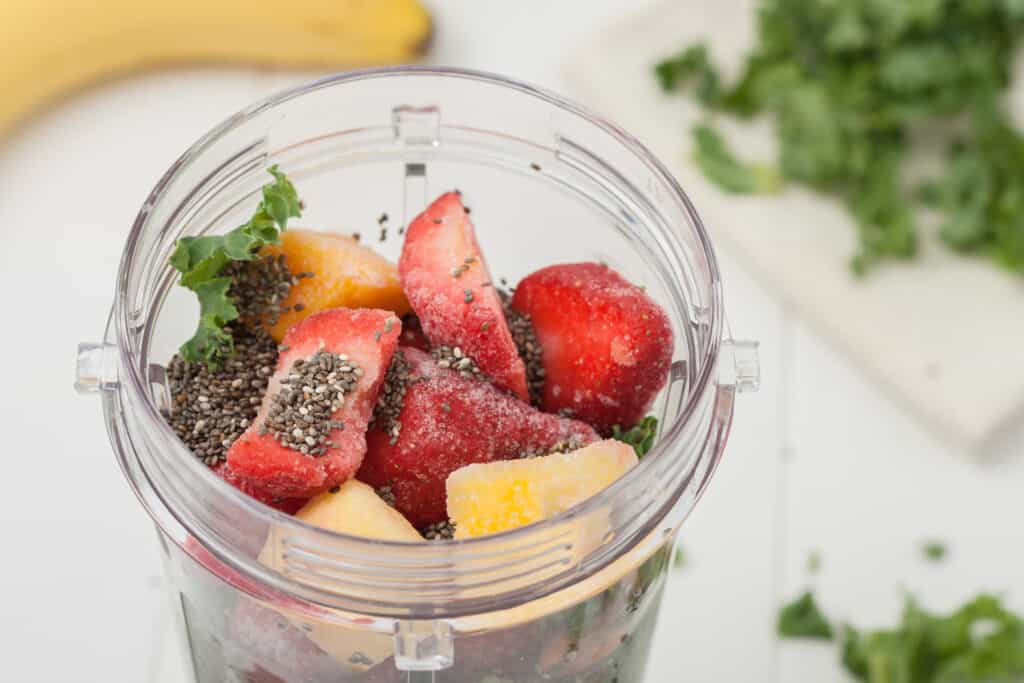
Using Frozen Fruit in Smoothies
Now that we’ve covered how to freeze a variety of fruits and other smoothie ingredients, let’s discuss how to put these frozen goodies to use. As a smoothie expert who has shared over 100 smoothie recipes on this blog, I can assure you that using frozen fruit can take your smoothies to the next level.
The Benefits of Using Frozen Fruit
Using frozen fruit in your smoothies has several benefits. Firstly, it gives your smoothies a thick, creamy texture that’s similar to a milkshake or ice cream. This makes your smoothies feel more like a treat, which is especially great if you’re making smoothies for kids or if you’re trying to satisfy a sweet tooth in a healthy way.
Secondly, frozen fruit enhances the natural sweetness of your smoothies. When you freeze fruit at its peak ripeness, you’re locking in its natural sugars. This means you can often skip added sweeteners like honey or sugar, making your smoothies healthier.
Tips for Blending Frozen Fruit
When it comes to blending frozen fruit, a powerful blender is your best friend. A strong blender can easily break down frozen fruit, giving you a smooth, lump-free smoothie. If your blender struggles with frozen fruit, you might need to let the fruit thaw slightly before blending.
Another tip is to add your liquid (like almond milk, coconut water, or yogurt) to the blender first, followed by any other ingredients like chia seeds or nut butter, and then add your frozen fruit last. This helps the blender to run more smoothly and prevents it from getting stuck on a big chunk of frozen fruit.
Creating the Perfect Smoothie Texture
The key to a great smoothie texture is balance. You want your smoothie to be thick and creamy, but not so thick that you can’t drink it through a straw. A good rule of thumb is to use a 2:1 ratio of fruit to liquid. So, for every 2 cups of frozen fruit, you’ll want to use 1 cup of liquid. You can adjust this ratio to suit your personal preference.
See also: How to freeze spinach for smoothies
Common Questions About Freezing Fruit for Smoothies
To freeze fresh fruit for smoothies, wash and dry the fruit, then cut it into small pieces if necessary. Spread the fruit in a single layer on a baking sheet lined with parchment paper and freeze until solid. Once frozen, transfer the fruit to freezer-safe bags for long-term storage.
The process for freezing fruits and vegetables for smoothies is similar. Wash and dry them, then cut into small pieces if needed. Spread them out on a baking sheet to freeze, then transfer to freezer bags. For leafy greens like spinach, blanching before freezing can help preserve color and nutrients.
Most fruits freeze well for smoothies, including bananas, berries, peaches, mangoes, and citrus fruits. You can also freeze the juice of citrus fruits in ice cube trays for an added flavor boost in your smoothies.
Fruits with high water content, like watermelon and cucumber, don’t freeze well as they can become mushy when thawed. Also, the texture of apples and pears can change when frozen, so they’re typically not the best choice for freezing.
Final Thoughts on How to Freeze Fruit for Smoothies
We’ve journeyed through the process of how to freeze fruit for smoothies, from the initial preparation to the final blend. It’s clear that this simple step of freezing fruit can significantly enhance the quality of your smoothies, adding a creamy texture and natural sweetness that’s hard to beat.
Freezing fruit also allows us to make the most of seasonal produce, reduce food waste, and have a ready supply of smoothie ingredients on hand. It’s a game-changer for smoothie enthusiasts, busy parents, and anyone looking to add a nutritious and delicious boost to their day.
Remember, the key to a great smoothie is balance and quality ingredients. Whether it’s ripe bananas, juicy berries, or tangy citrus fruits, freezing your fruit at its peak ensures you’re getting the best flavor and nutrition in your smoothies.
So, next time you find yourself with an abundance of ripe fruit or spot a sale at your local grocery store, consider freezing some for your future smoothies. Your taste buds (and your wallet) will thank you. Here’s to healthier, tastier, and more enjoyable smoothie-making!
Happy Blending!
Amanda
